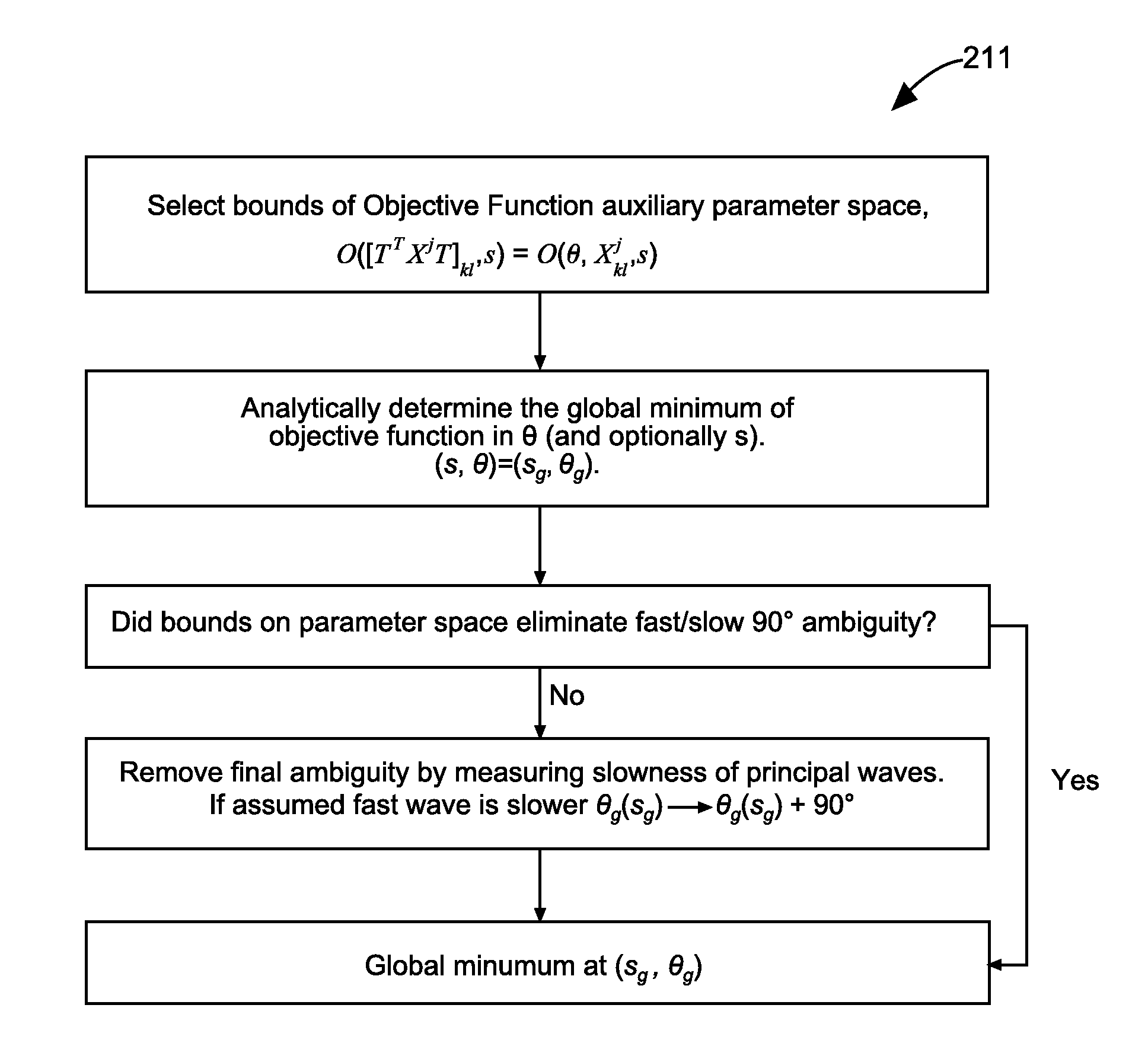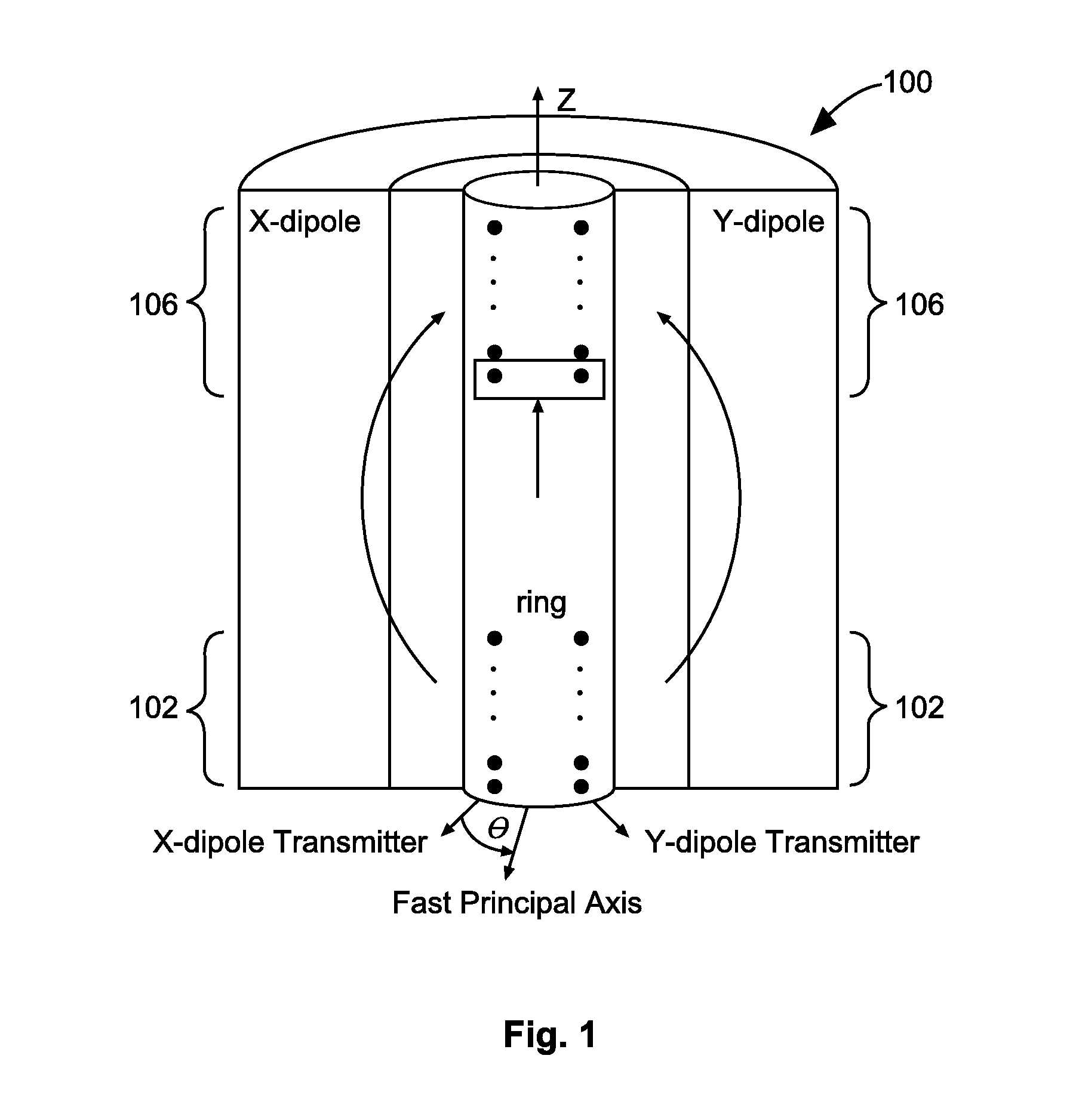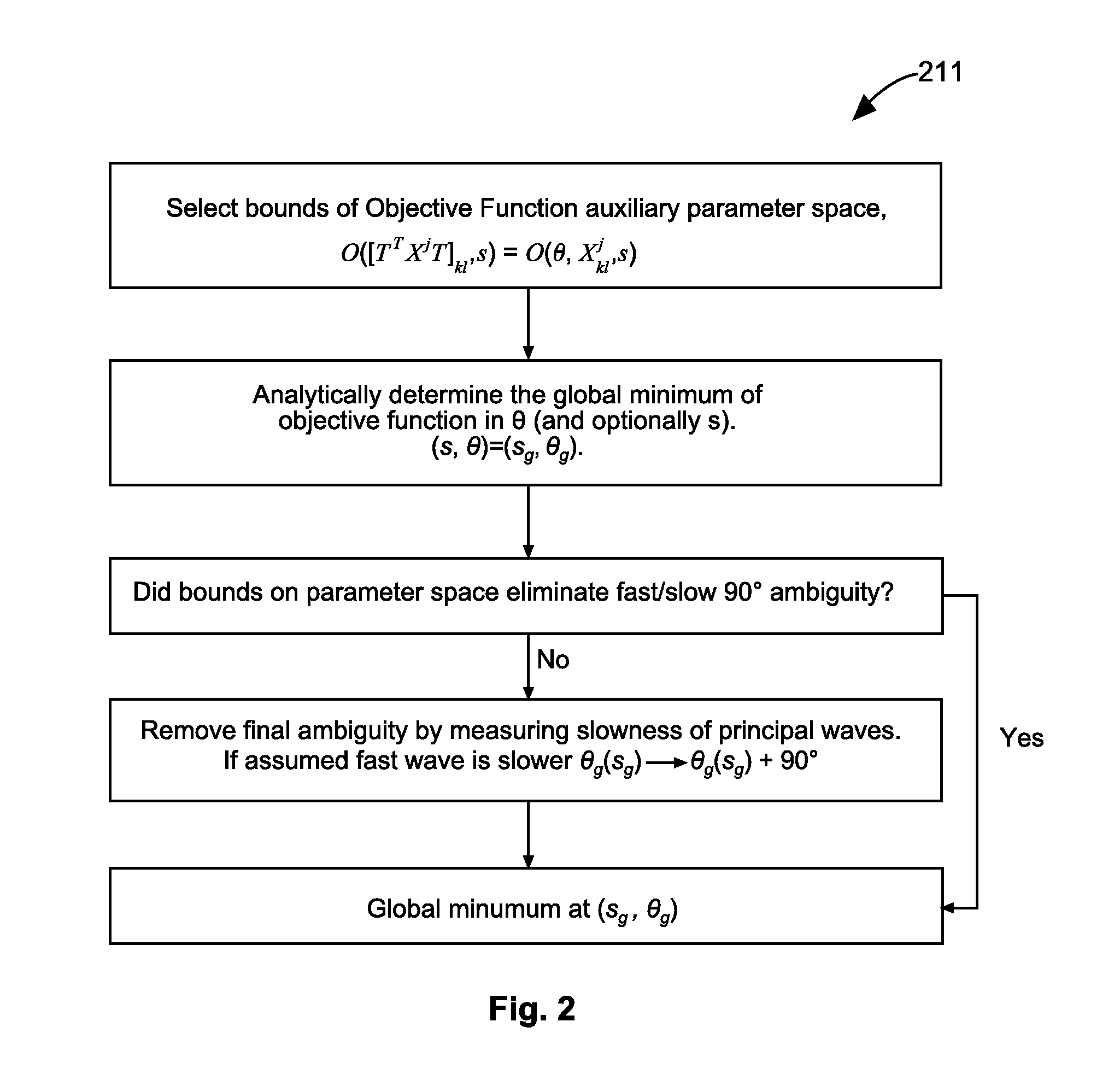Analytic estimation apparatus, methods, and systems
an estimation apparatus and azimuth angle technology, applied in seismology for waterlogging, instruments, measurement devices, etc., can solve the problems of increasing the complexity of the polynomial, reducing the execution time, and not indicating analytically minimizing the objective function with respect to the azimuth angl
- Summary
- Abstract
- Description
- Claims
- Application Information
AI Technical Summary
Benefits of technology
Problems solved by technology
Method used
Image
Examples
first example
(a) FIRST EXAMPLE OBJECTIVE FUNCTION
[0024]As an example, consider an embodiment of the objective function specified in U.S. Pat. No. 6,791,899. In the case of a single transmitter ring, N receiver rings, and a single auxiliary parameter, slowness s, the objective function can be expressed in the form of equation (3):
O(θ,s)≡∑m∈{1,…,N}TST≤t≤TST+T[FPest(θ,t,s)-FPm(θ,t+szm)]2,where(3)FPest(θ,t,s)≡1N∑nFPn(θ,t+szn).(4)
[0025]In equations (3) and (4), TSTis the start time of the flexural mode waveform at mid-array, and zm is the position of receiver ring m relative to mid-array. This objective function simply computes the variance of the (1,1) element of equation (2). For the correct choice of the angle θ, the waveform FP will travel at the slowness of the fast principal flexural wave, s1, and the waveforms at each receiver, FPm, will be stationary for s=s1. At this point the objective function (variance) will be a minimum. The objective function will also be a minimum at θ+90° for s=s2, th...
second example
(b) SECOND EXAMPLE OBJECTIVE FUNCTION
[0026]A more complex example is an embodiment of the objective function specified in U.S. Pat. No. 5,712,829. After studying some associated synthetic waveforms, it can be seen that the fast and slow principal waveforms are nearly identical, except for a time shift due to the difference in slowness. This makes it possible to form an objective function using all receiver combinations. In the case of a single transmitter ring, N receiver rings, and two auxiliary parameters, the objective function can be expressed in equation (5) as:
(5)O(θ,δs,s2)∑m,n∈{1,…,N}TST≤t+s1zm≤TST+T{[SPn(θ,t-s2(m-n)δz+δs(zm+z_))-FPm(θ,t)]2+[SPn′(θ,t-s2(m-n)δz+δs(zm+z_))-FPm′(θ,t)]2}.
[0027]In equation (5), δs is the difference in slowness of the principal waves, δs=s2−s1, δz is the receiver element spacing, z is the distance from transmitter to receiver mid-array, and the primed functions are the derivatives with respect to θ of the fast and slow principal waves, such that:
FP...
PUM
 Login to View More
Login to View More Abstract
Description
Claims
Application Information
 Login to View More
Login to View More - R&D
- Intellectual Property
- Life Sciences
- Materials
- Tech Scout
- Unparalleled Data Quality
- Higher Quality Content
- 60% Fewer Hallucinations
Browse by: Latest US Patents, China's latest patents, Technical Efficacy Thesaurus, Application Domain, Technology Topic, Popular Technical Reports.
© 2025 PatSnap. All rights reserved.Legal|Privacy policy|Modern Slavery Act Transparency Statement|Sitemap|About US| Contact US: help@patsnap.com



